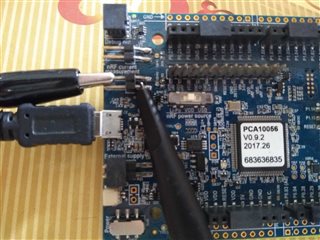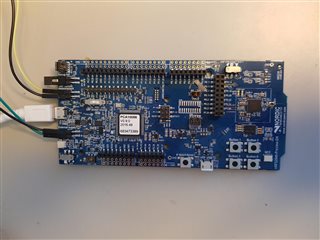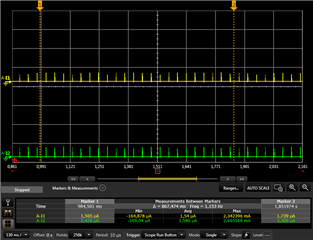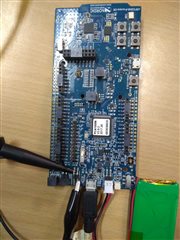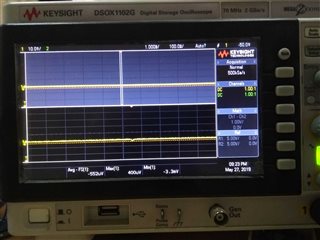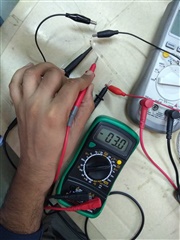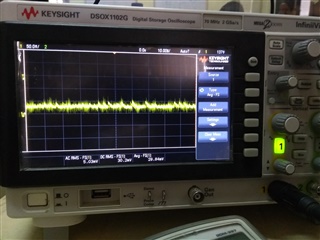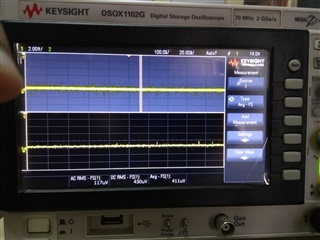Hi,
I am using nrf52840 Preview - DK, with SDK v15.3.0 and Softdevice API 6.1.1
I have modified the 'ble_app_blinky' example to have an advertising interval of 500ms and turned off the NRF_LOG by setting the NRF_LOG_ENABLE and NRF_LOG_BACKEND_URAT_ENABLE to 0 in the sdk_config file.
I have measured the current using an ocsilloscope and I am not getting the idle current (3 uA)a s described on the online power profiler, I entered the the following parameters in the online power profiler
nrf52840, voltage 3, DCDC off, internal RC, Radio power 0 dbm, advertising(connectable), Tx payload: 31 bytes.
also we have not connected the oscilloscope in the manner shown in the documentation, but we used one probe and connected it one pin of nrfCurrent Measurement and the other one to it's ground (reference). because when we were connected it in the manner shown in documentation we were not able to see the waveform.
Please, tell me how can I achieve 3 uA idle current consumption.
I have attached the '.scp' file that has the respective readings



